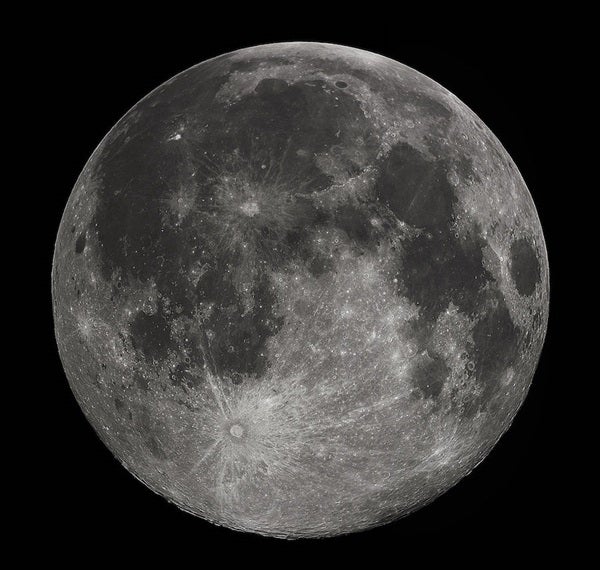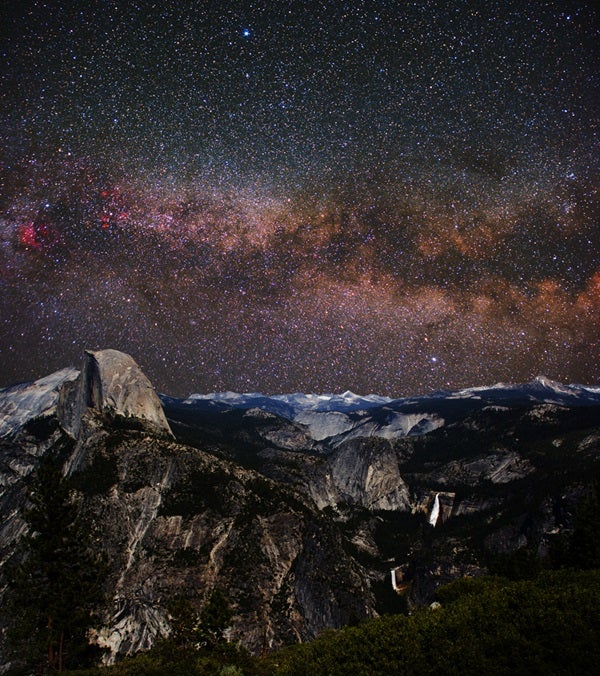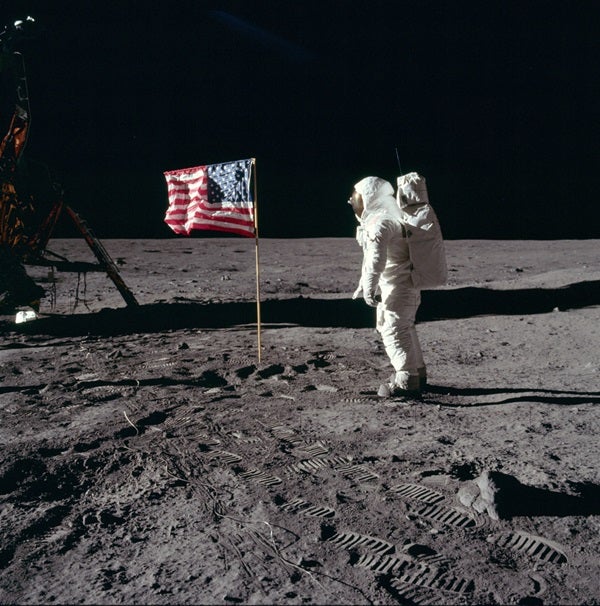Observers of the outer solar system can get a good view of Uranus before dawn. The best time to look for it is shortly before twilight begins around 3:30 a.m. local daylight time. Uranus then lies 25° above the eastern horizon among the background stars of southern Aries the Ram. This morning, use binoculars to find the magnitude 5.8 planet 2.3° south of the magnitude 5.7 star 19 Arietis. A telescope reveals Uranus’ blue-green disk, which spans 3.5″.
Saturday, July 13
The waxing gibbous Moon passes near Jupiter tonight. From North America, the two were closest this afternoon (when they were below the horizon), though they remain within 5° of each other after darkness falls. Despite Luna’s brilliance dominating the scene, you should have little trouble picking out the magnitude –2.5 planet to its right. Once the Moon moves away later this week, it’s worth targeting Jupiter through a telescope. The gas giant world spans 45″ and shows striking detail in its cloud tops. Any scope reveals two parallel dark belts that sandwich a brighter zone coinciding with the equator.
Sunday, July 14
Today marks the peak of Pluto’s 2019 appearance. The distant world reaches opposition, which means it lies opposite the Sun in our sky and remains visible all night. It glows dimly at 14th magnitude, however, so you’ll need an 8-inch or larger telescope with good optics to spot it visually. Pluto currently lies in northeastern Sagittarius, some 1.9° northwest of the 6th-magnitude star 53 Sagittarii.
Monday, July 15
The nearly Full Moon passes near Saturn tonight. The pair appears low in the southeast as darkness falls, with the magnitude 0.1 planet nestled about 2° to the Moon’s left. The two approach each other as the night progresses and come within 1° of each other as they dip low in the southwest before dawn. Saturn is a treat to view through a telescope on any other night this week. The ringed world currently shows an 18″-diameter disk surrounded by a striking ring system that spans 42″ and tilts 24° to our line of sight.
Tuesday, July 16
Full Moon arrives at 5:38 p.m. EDT. It rises in the southeast just as the Sun sets and reaches its peak in the south around 1:30 a.m. local daylight time. The Moon lies near the border between the constellations Sagittarius the Archer and Capricornus the Sea Goat. As the Moon makes its way across the sky tonight, residents across most of Europe, Africa, and Asia will see it pass through Earth’s shadow. This partial lunar eclipse runs from 20h01m to 23h00m UT. Maximum eclipse occurs at 21h31m UT, when 66 percent of the Moon lies in our planet’s shadow.
Perhaps no month better epitomizes summer in the Northern Hemisphere than July. And this month finds the season’s namesake asterism, the Summer Triangle, on prominent display. The trio’s brightest member, Vega in the constellation Lyra the Harp, stands nearly overhead shortly before midnight. The asterism’s second-brightest star, Altair in Aquila the Eagle, then lies more than halfway from the southeastern horizon to the zenith. Deneb, the luminary of Cygnus the Swan, marks the Summer Triangle’s third corner. Although it is this asterism’s dimmest star, it’s the brightest point of light in the entire northeastern sky.
Thursday, July 18
The Sun’s outermost major planet, Neptune, now rises around 11 p.m. local daylight time. But the best time to look for this ice giant world comes when it climbs nearly halfway to the zenith as morning twilight commences. The magnitude 7.8 planet lies in Aquarius, 1.1° east-northeast of 4th-magnitude Phi (φ) Aquarii. You can confirm your sighting of Neptune through a telescope, which reveals the planet’s 2.3″-diameter disk and blue-gray color.
Friday, July 19
The Southern Delta Aquariid meteor shower continues to ramp up this week. The shower has a broad maximum in late July, but you should see a few members in the hours before dawn. Unfortunately, a waning gibbous Moon currently shares the morning sky, reducing the number of meteors you can see. To tell a Southern Delta Aquariid meteor from a random dust particle burning up in Earth’s atmosphere, trace the streak of light’s path backward. A shower meteor will appear to originate from the constellation Aquarius the Water-bearer. Fortunately, the Moon will wane to a thin crescent by the shower’s peak.
The waning gibbous Moon rises around 11 p.m. local daylight time, providing observers a chance to gaze at our only natural satellite on the golden anniversary of the Apollo 11 lunar landing. The Moon resides in Aquarius the Water-bearer tonight, nearly half the sky away from its perch in Virgo the Maiden on that historic day 50 years ago. As if to commemorate the event, the Moon reaches apogee — the farthest point in its orbit around Earth — at 7:59 p.m. EDT. It then lies 251,954 miles (405,481 kilometers) from our planet’s center.
Sunday, July 21
The dwarf planet Ceres appears nearly 30° high in the south-southwest as darkness falls and makes a tempting target during the early evening hours. Glowing at 8th magnitude, it’s easy to find through binoculars or a telescope among the bright stars near the border between Scorpius and Libra. The best way to find it is to star-hop from the lovely 2nd-magnitude double star Beta (β) Scorpii. Tonight, Ceres lies 2.9° due west of this star.












